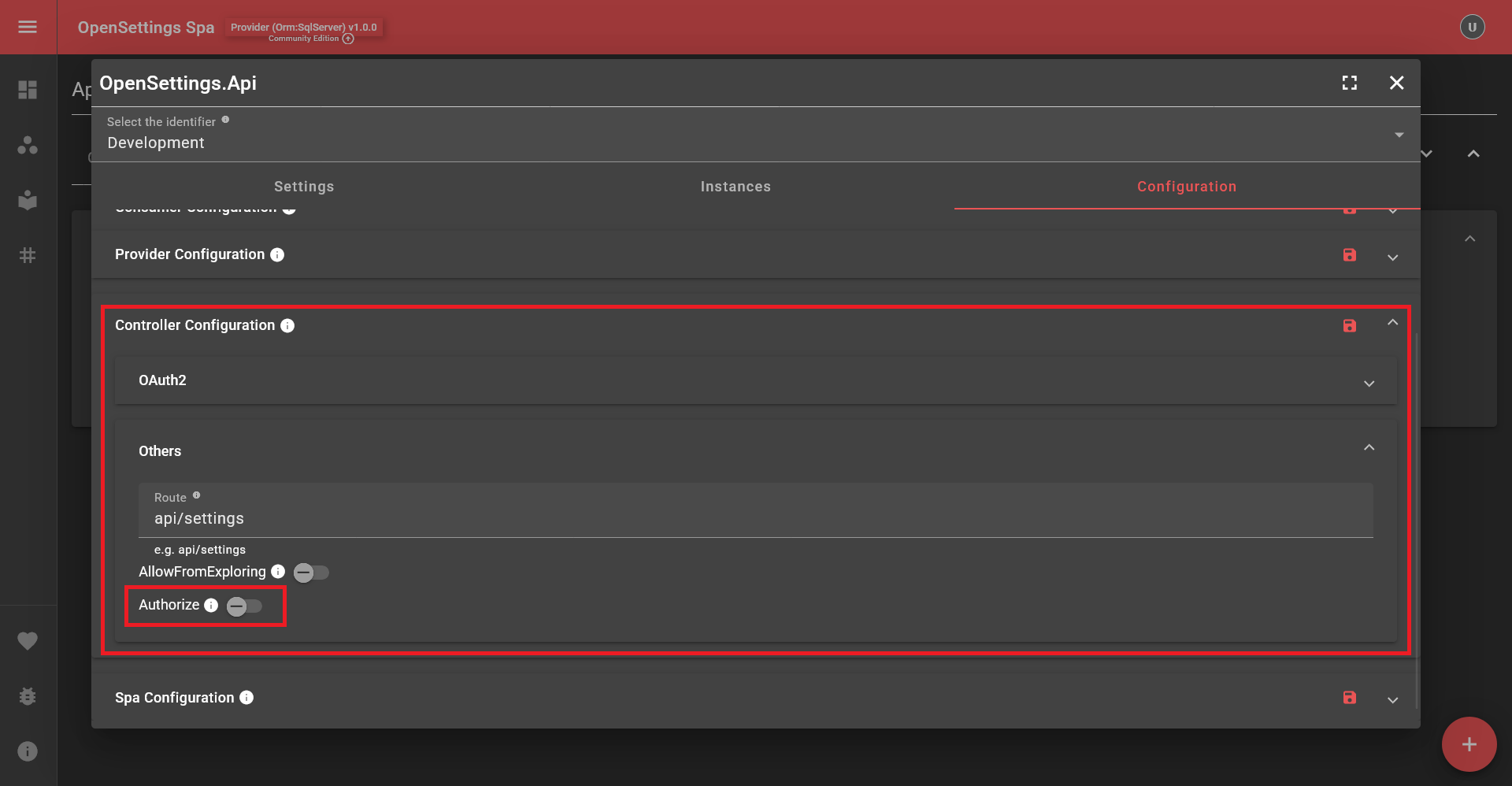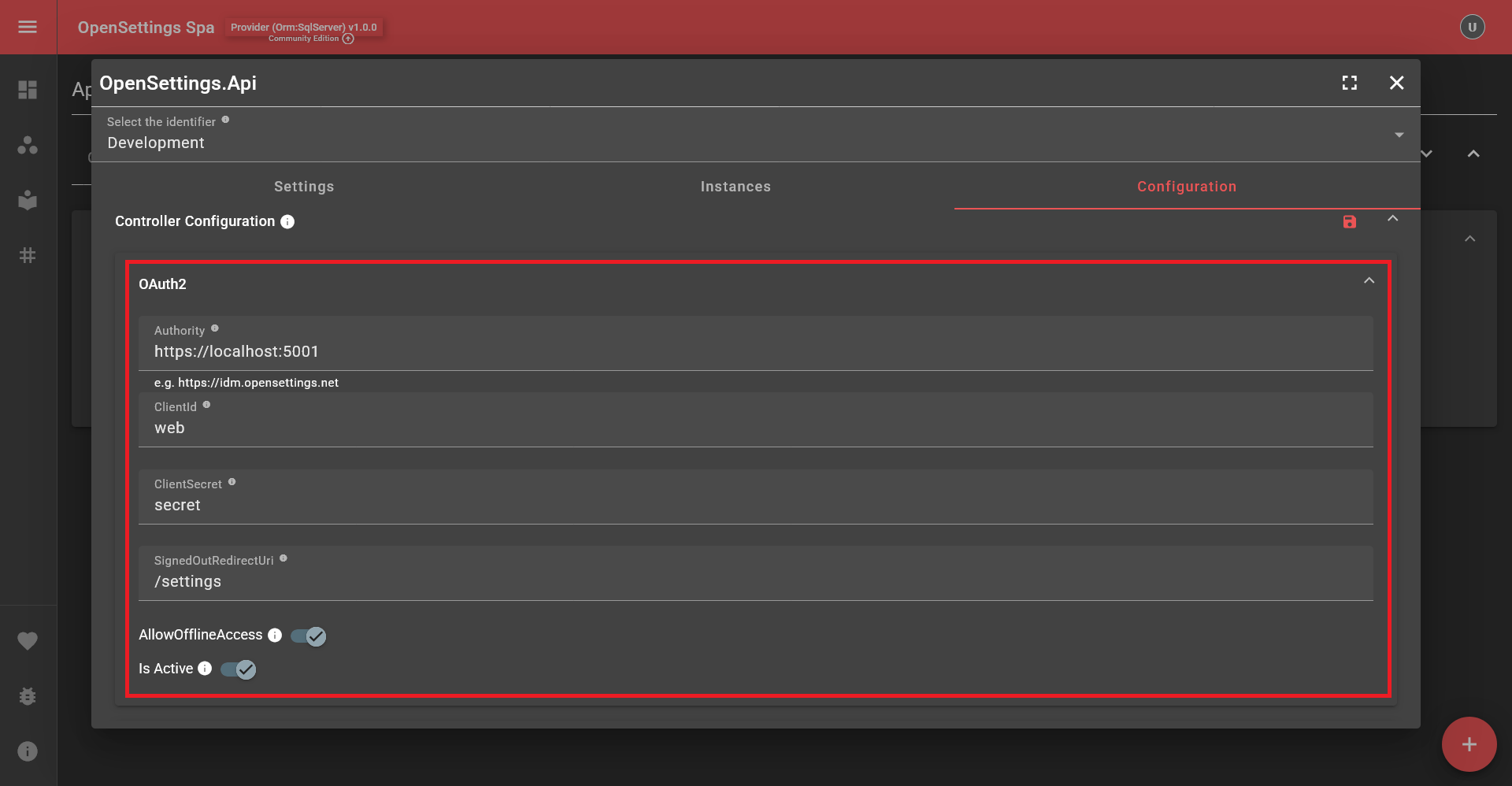Securing OpenSettings
📌 Introduction
By default, OpenSettings does not enforce authorization. To secure the application, you must explicitly protect controller access.
OpenSettings provides built-in Basic Authentication, and API communication defaults to Basic Authentication.
🔹 Enabling Authorization
To protect controllers, enable the OpenSettings controller configuration from the Open Settings Spa:

Tip
Don’t forget to press the Save button on the right side of the section. A restart is required after saving for the changes to take effect.
If your application acts as a consumer and RequiresAuthentication = false, this does not necessarily mean the service is insecure, as the ultimate decision depends on the provider.
🔹 Provider & Consumer Authorization Behavior
The following table illustrates different authorization configurations and their outcomes:
| Provider (RequiresAuthentication) | Consumer (RequiresAuthentication) | Final Authorization Behavior |
|---|---|---|
✅ true |
❌ false |
🔒 true for both Consumer & Provider |
❌ false |
✅ true |
🔒 true for Consumer, ❌ false for Provider |
❌ false |
❌ false |
⚠️ false (⚠️ Insecure: Anyone can access controllers) |
✅ true |
✅ true |
🔒 true for both Consumer & Provider |
When RequiresAuthentication = true, accessing the OpenSettings controllers or settings page requires authentication. If authentication is needed, the settings page will automatically redirect users to a login page.
🔹 Authentication Credentials
By default, authentication uses ClientInfo credentials set during the initial setup:
- ClientId:
principal - ClientSecret:
password
Once logged in, users have full access. There is no role-based authentication or permission management.
🔹 Using OAuth2 for Authentication
If you prefer to use OAuth2 authentication, OpenSettings allows integration with your OAuth2 provider.
Modify the configuration as follows:

OAuth2 Configuration Explained:
- Authority: The Url of your identity provider. For instance, https://idm.opensettings.net
- ClientId & ClientSecret: Must be configured in your identity provider.
- AllowOfflineAccess: Enables refresh tokens.
- IsActive: Determines if OAuth2 is enabled.
Note
If your service is running as a consumer, you do not need to manually configure OAuth2. The provider shares the required authentication settings during startup.
🔹 Registering Middleware
To enable authentication and authorization, register the middleware before app.MapControllers();.
A typical pipeline setup looks like this:
...
app.UseRouting();
app.UseOpenSettings();
app.UseAuthentication();
app.UseAuthorization();
app.MapControllers();
...
That's it! OpenSettings is now secured. 🔒
✅ What's Next?
✨ OpenSettings makes settings management simple and efficient! 🚀